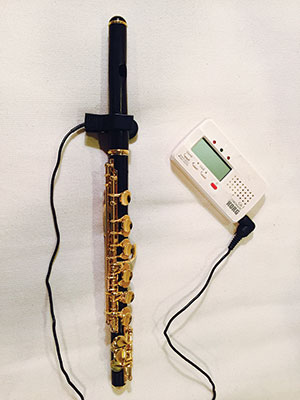Question: This fall I will be a senior in high school and have been asked to play piccolo in the wind ensemble. I have never played the piccolo before. How do I start?
Answer: Playing the piccolo in a wind ensemble can be an incredibly fun and rewarding experience. The piccolo plays an important role in a wind ensemble. Even when the entire ensemble is playing, the piccolo can always be heard, so it has an almost constant solo role. Playing the piccolo well also can make you a more marketable musician in the long run. Here are some tips to help you get started.
The Instrument
The first step is to acquire the best instrument possible. If you borrow a piccolo from your high school, make sure it is in top working condition. Many high school piccolos have been used in marching bands for years and have been exposed to rain and heat and have not received proper maintenance. Bring the borrowed instrument to your private flute lesson and ask your teacher to evaluate its current condition and advise what repair shop is best to use if needed.
Practicing: The Warm Up
Set aside a certain amount of time every day to practice piccolo. I begin my practice session playing the flute first. Then I switch to practicing the piccolo. When I am finished, I switch back to the flute to play some scales on the flute to loosen my embouchure. This alternation between instruments is similar to how professional brass players “warm down” at the end of a rehearsal or a concert.
First practice long tones on the piccolo. Slow chromatic half-steps slurred by two notes, such as the first exercise in the Marcel Moyse De La Sonorite, is a good warm up to learn how to play with the smaller aperture (opening in the lips) that is necessary to play the piccolo. Place the music stand next to a mirror in your practice area and also place a tuner on the music stand (set at A=440). As you practice the descending two-note patterns, keep the corners of your embouchure relaxed and feeling natural. Play with a good, even airstream, and keep your throat open and relaxed. As you exhale, listen closely to produce the most beautiful, focused tone possible. Experiment with how much pressure you use to place the lip plate against the chin and also how high or low you place the embouchure plate on the bottom lip. Since everyone has differently shaped lips, one size does not fit all when it comes to exact placement. When the sound is beautiful and in tune, then you know the placement is correct.
Remember that small increments of change will greatly affect both the tone and the intonation of the piccolo because of its small size. Observe embouchure and piccolo placement in the mirror when you are pleased with the sound. Become familiar with the pitch tendencies of each note. If you cover too much of the embouchure hole, the highest notes on the piccolo will not speak. When in doubt, slightly roll out.
Next, practice some of the same etudes and exercises that you play on the flute. Notice the differences and similarities. On the piccolo, vibrato should be narrower in width than on the flute. If it is too wide, the tone will not blend with the ensemble. Make a list of questions while practicing the piccolo to ask your private teacher. Even better, contact the piccolo player in the local orchestra and schedule a private lesson. A piccoloist in an orchestra will have all sorts of valuable advice from special fingerings to books and solos written just for the piccolo.
The First Rehearsal
Arrive early in order to warm up before the rehearsal begins. Use a contact microphone that attaches to both the tuner and the piccolo. These are wonderful devices because they register only your pitch when playing in a group. These may be purchased online or at a music store. Attach the contact microphone to the piccolo right above the barrel.

Use a pencil to mark an X over any note, phrase, or section that sounds out of tune with the other instrumentalists during the rehearsal. Later, practice tuning with these notes with the other players. Tuning the high frequencies of the piccolo is difficult to hear. Playing the piccolo in an ensemble requires a lot of flexibility. Just because a tuner may register you as playing perfectly in tune, this does not mean you are always correct and others are wrong. All instruments have their own tendencies and idiosyncrasies, so playing in tune in an ensemble might be slightly different than what the tuner registers to accommodate the pitch tendencies of other instruments.
Success at playing the piccolo will depend on the amount of time you spend practicing. Many flutists say they are not good piccolo players, but if you asked them how much time they spend consistently practicing the piccolo, the answer is usually none at all. Learning to play the piccolo well can bring you tremendous joy (and perhaps employment) in the years to come.






